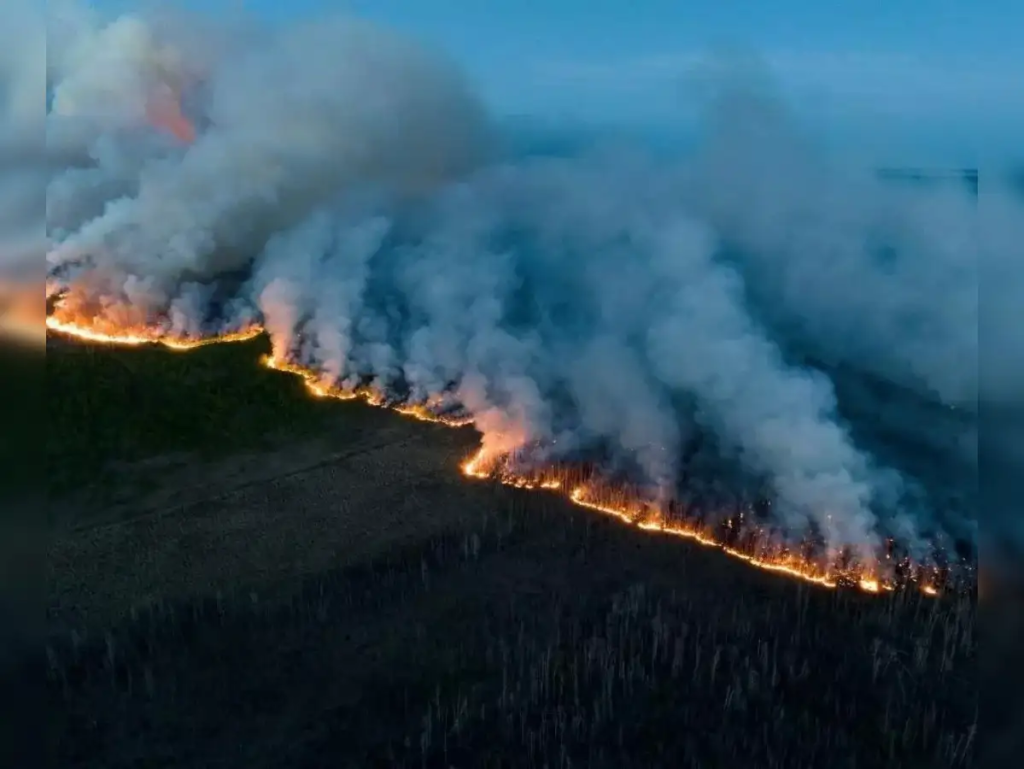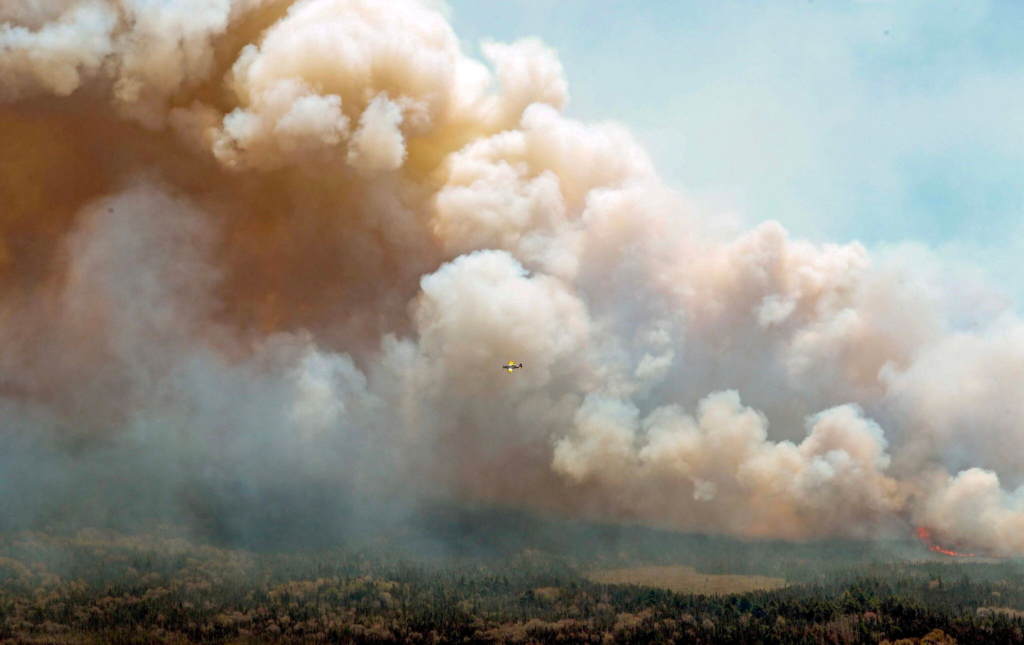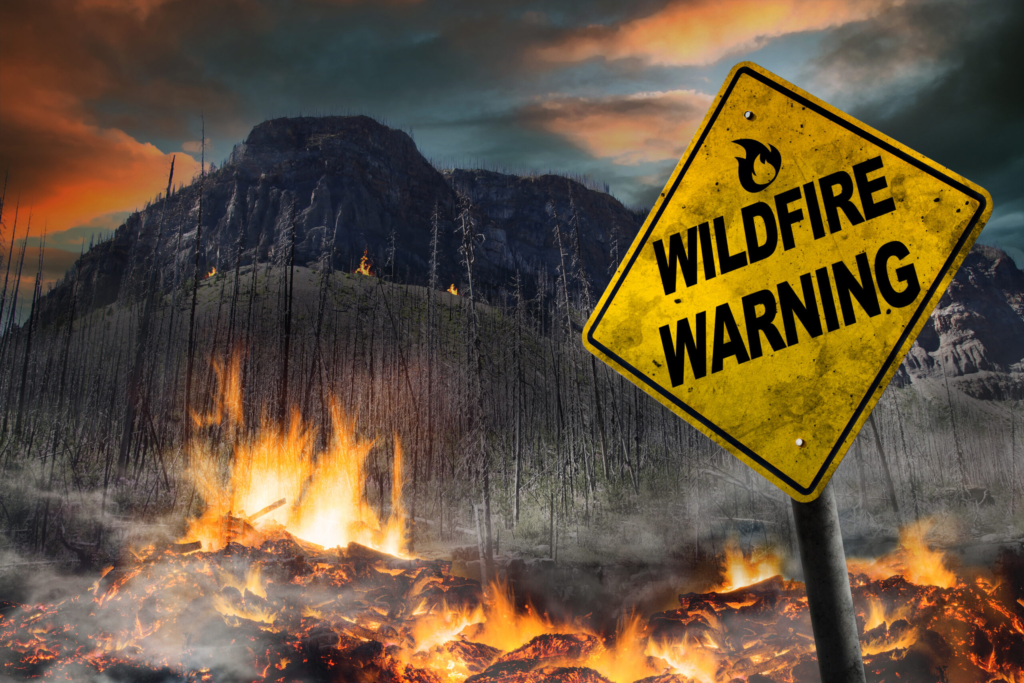The U.S. State Department has issued a fresh travel advisory for Americans planning to visit Canada. The warning comes amid a new wave of dangerous wildfires spreading across parts of Canada, especially in the western provinces. The advisory, updated over the weekend, urges travelers to “exercise increased caution” due to the growing number of wildfire-related emergencies that are disrupting daily life, travel infrastructure, and air quality in several regions.
This is not the first time such an advisory has been issued, but officials say the current fire season could be one of the worst in recent years. U.S. travelers are strongly advised to stay informed, monitor weather conditions, and follow local evacuation protocols if already in affected areas.
Why the New Travel Warning Was Issued
According to the Canadian Interagency Forest Fire Centre (CIFFC), over 300 active wildfires are currently burning across provinces like British Columbia, Alberta, and parts of Ontario and Quebec. Many of these fires are considered “out of control,” with dry weather, high winds, and lightning strikes contributing to rapid fire spread.

The U.S. Embassy in Ottawa, through its website, stated that travelers should remain alert as wildfire conditions can change suddenly, leading to road closures, cancelled flights, and evacuations without much warning.
The State Department’s official website, travel.state.gov, now lists large parts of western Canada under a Level 2 Advisory: “Exercise Increased Caution.” The alert mentions poor air quality, disrupted travel services, and risk of exposure to fast-moving wildfires.
Areas Most Affected by the Wildfires
So far, British Columbia is bearing the brunt of the destruction. Major cities like Kelowna and Kamloops have seen mandatory evacuation orders issued for nearby communities. Alberta is also dealing with dozens of fires that have already burned thousands of hectares of land.
Smoke from the fires has also affected U.S. border states like Washington, Montana, and North Dakota. The Air Quality Index (AQI) in some areas has risen to “Unhealthy” levels, especially during the evenings when smoke settles in low-lying areas.
Toronto and Montreal have not been directly affected by flames, but shifting wind patterns have caused significant haze and poor visibility. Travelers to these cities are being warned to wear masks or limit outdoor activity if smoke levels increase.
Health Concerns from Wildfire Smoke
Health officials in both the U.S. and Canada are raising alarms about the danger of inhaling wildfire smoke, which contains fine particles that can enter the lungs and bloodstream. The U.S. Centers for Disease Control and Prevention (CDC) advises that smoke exposure can trigger asthma attacks, heart problems, and respiratory issues—especially in children, seniors, and people with preexisting conditions.
The CDC has published a helpful guide on how to protect yourself from wildfire smoke here: Wildfire Smoke Health Tips – CDC
People traveling with young children, elderly relatives, or those with breathing problems are urged to reconsider plans to visit western Canada until conditions improve.
Airline and Transport Disruptions
Several major airports in Canada, including Vancouver International Airport (YVR) and Calgary International Airport (YYC), have reported delays and cancellations. Wildfire smoke has reduced visibility for pilots, causing flight rerouting and grounding.

Rail services, including some VIA Rail and freight lines, have been suspended in affected regions. Road travel is also dangerous in certain fire zones, with highways either closed or under escort by emergency services.
The U.S. Department of Transportation recommends checking with your airline, rental car agency, or local transportation websites for updates before travel.
What Travelers Should Do Now
If you’re currently in Canada or have upcoming plans, here are a few essential tips:
- Stay Updated: Use websites like CIFFC and Environment Canada for live fire maps and alerts.
- Air Quality Monitoring: Use apps like AirNow, IQAir, or local weather services to check AQI before going outdoors.
- Emergency Contacts: Have the contact details of the nearest U.S. consulate or embassy.
- Travel Insurance: Ensure your plan covers trip interruptions or medical emergencies related to natural disasters.
Canada’s Response to the Crisis
Canadian Prime Minister Justin Trudeau addressed the nation on Friday, calling the wildfires a “national emergency” and promising additional federal support for firefighters and displaced residents. Over 1,000 international firefighters have already arrived from countries like the U.S., Mexico, Australia, and France to assist in controlling the blazes.
Provinces have issued burn bans, park closures, and emergency declarations in the hardest-hit regions. Military and emergency services are actively working to evacuate residents and manage traffic flow in affected areas.
Climate Change Behind Intense Wildfires
Experts warn that climate change is fueling longer and more destructive wildfire seasons. Rising temperatures, less rainfall, and changing wind patterns are making Canadian forests drier and more flammable than ever before.

Environmental groups and scientists are urging both U.S. and Canadian governments to invest more in climate resilience, forest management, and emergency response infrastructure.
Bottom Line for U.S. Travelers
With wildfires burning out of control and air quality declining rapidly, Americans are strongly urged to postpone non-essential travel to parts of Canada, especially western provinces.
Those already in affected regions should follow local news, obey evacuation orders, and remain prepared for sudden changes in conditions.
For more information, you can visit the U.S. Department of State’s official travel advisory page: U.S. State Department – Travel Advisories
Also Read – These Flying Mistakes Can Ruin Your Entire Trip





